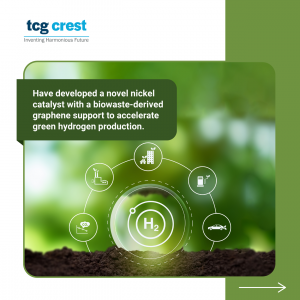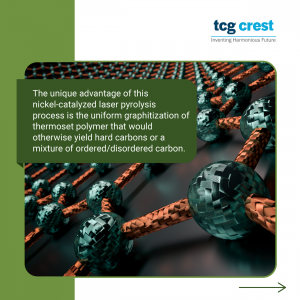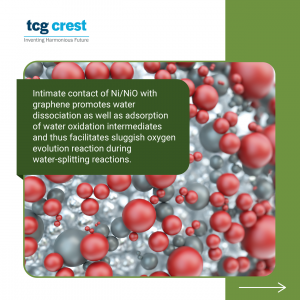Green hydrogen is becoming increasingly important in the conversation around sustainability. However, present technologies for its manufacture are limited by the expensive noble metals used to catalyse the oxygen-evolution reaction (OER) of the hydrogen production process.
In a groundbreaking study published this year in Carbon Elsevier, a team of scientists from the Research Institute for Sustainable Energy (RISE), TCG-CREST and the Indian Institute of Science Education and Research (IISER), Pune have developed a novel high-performance nickel catalyst for OER from bio-wastes.
The new catalyst uses a graphene support that is produced from a biowaste-derived thermoset polymer through a highly economic laser process. The unique advantage of this nickel-catalysed laser pyrolysis is the uniform graphitization of thermoset polymer that would otherwise yield hard carbons or a mixture of ordered/disordered carbon. Thanks to the high electronic conductivity provided by the nickel and nickel oxide (Ni/NiO) dispersed across this high-quality surface, the novel catalyst achieves excellent OER activity under alkaline conditions.
Congratulations to the researchers on their breakthrough! Their work is poised to accelerate the adoption of green hydrogen technologies for a cleaner future.
Read the full paper here:
https://linkinghub.elsevier.com/retrieve/pii/S0008622324004949



